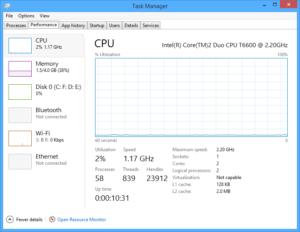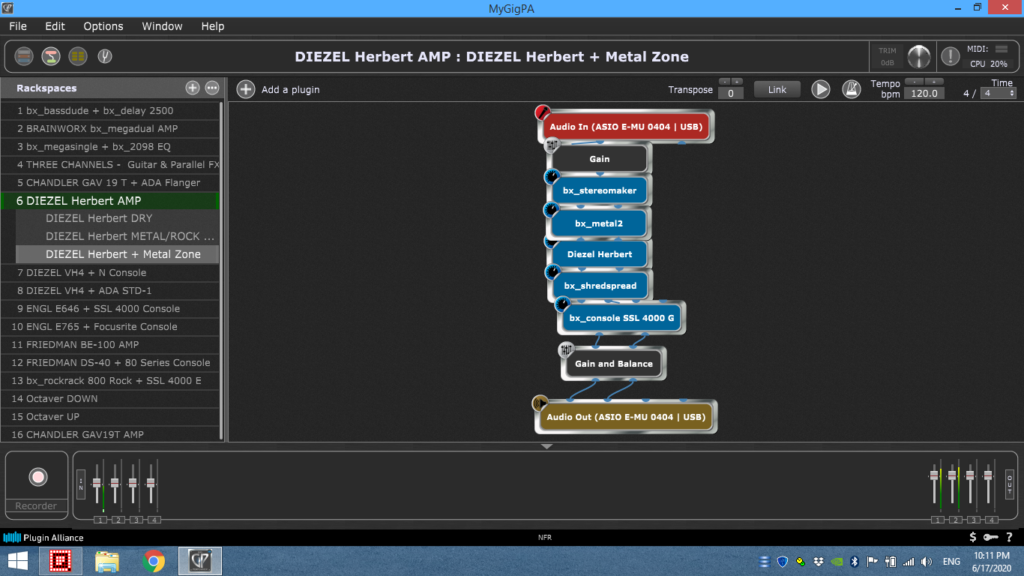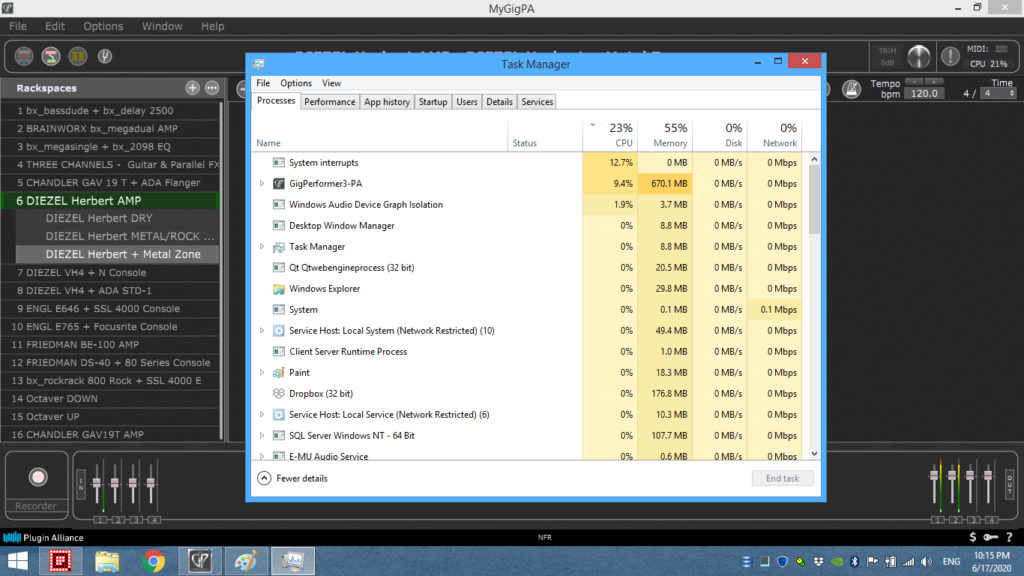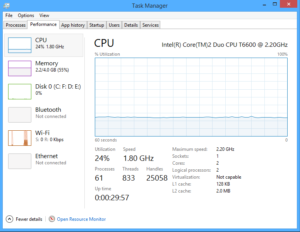I see these kinds of questions across the Internet, because users want to know if they can use their old laptop for gigging or to see how well Gig Performer does work with fewer resources.
Computer specification
These are the main reasons I decided to write this article. In 2009, I bought a Fujitsu Amilo Pi 3560 laptop, and back in the day it was a really great laptop. It featured an Intel Core 2 Duo processor, 4 GB RAM and a GeForce GPU chip. I downloaded HWiNFO and took a screenshot to share detailed specifications with you.

For the purpose of this article I wanted to show everything as is:
- I didn’t close or uninstall unnecessary applications (i.e. Dropbox),
- I didn’t disable unnecessary services (i.e. Print Spooler),
- I didn’t disable my security software (which I would if I was to have a gig),
- I didn’t check nor tweak any other settings (I set all update mechanisms to manual, check Task Scheduler, etc).
.
I connected my old E-MU 0404 USB audio interface to my laptop and installed Gig Performer v3.
The Performance section of the Task manager shows us basic usage info when this laptop is idle and Gig Performer isn’t running.

Gig Performer setup
All set: my Jackson guitar is plugged into my audio interface, which is connected to my laptop. I started Gig Performer and (since I’m a great hard rock and heavy metal fan) selected DIEZEL Herbert + Metal Zone (a great plugin from Plugin Alliance). I was really amazed by the quality of this setup and enjoyed playing. While Gig Performer’s CPU indicator shows 5-8% when I play clean, it shows 20-25% of CPU power for this setup below.

I kept playing, changing between rackspaces, changing effects, and it all went super fast, without glitches. It’s amazing that you can use a more than 11 year old laptop and an old audio interface to play fluently and produce such great rich and highly customizable tones. Gig Performer indeed uses low CPU.

While the CPU indicator in Gig Performer (which indicates audio processing cycles) shows 21%, you can see in Task Manager that the overall Gig Performer process only uses 9.4% of CPU! (learn what’s the difference) Here is the screenshot of Task Manager which shows CPU graph for the last 60 seconds.

I played for another hour and figured out I could’ve carried out the whole gig with this simple setup, and be proud of my guitar tone.
Conclusion
Here are some key points that I want to highlight:
- Gig Performers’ low CPU feature isn’t a marketing trick, you can run Gig Performer on your old laptop and be happy with the results.
- You don’t need to carry lots of equipment to your gigs, you’re perfectly fine with your guitar, an old laptop and an audio interface.
- You can get a superb tone very inexpensively: you don’t need to buy high-end gear – an inexpensive laptop, a simple audio interface, and Gig Performer will do the work.
.
One might think my setup isn’t robust enough. What if my laptop crashes because the hard disk failed, for example? (as an aside, what do you do if your pedal or effect processor dies? 🙂 I have good news for you: when you buy a Gig Performer license, you can activate up to 3 computers with that license! The idea behind this concept is really simple: activate your computer (or laptop) in your studio, one computer on stage, and the third one is for backup. By buying one license, you cover all your needs.
If you’re still wondering about my results, just test it yourself 🙂 Gig Performer is an audio plugin host that works great with old computers and laptops. Download Gig Performer and try it free for 14 days.
Enjoy Gig Performer.
Nemanja Pudar
.
Related topics:
– Glitch Free Audio Using Gig Performer 4 On A PC From 2009 (YouTube)
– Why use a computer with Gig Performer rather than hardware
– Guitar rigs – Computer-based vs. hardware-based
– How to optimize your PC for the stage (free e-book)
– Gig Performer is the best companion for all your musical efforts and more





